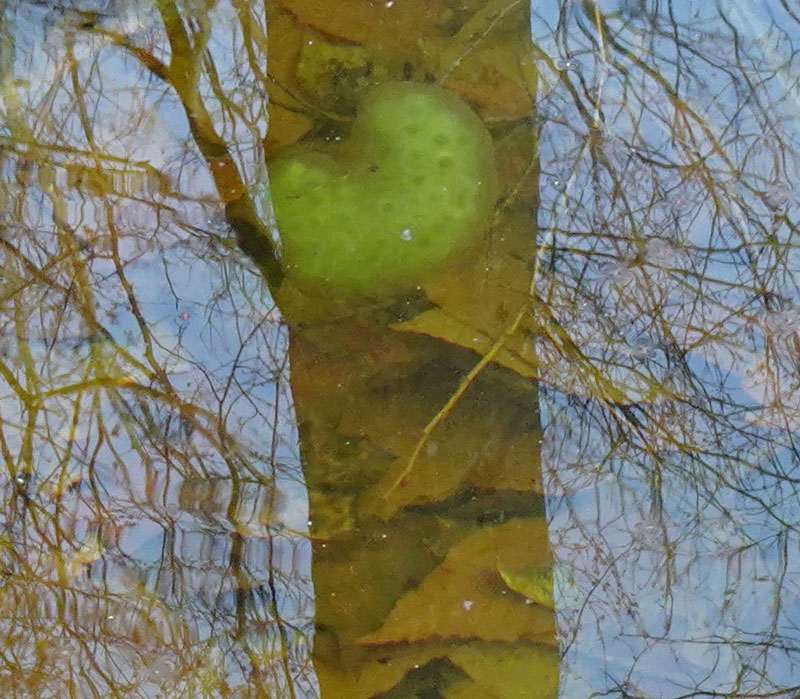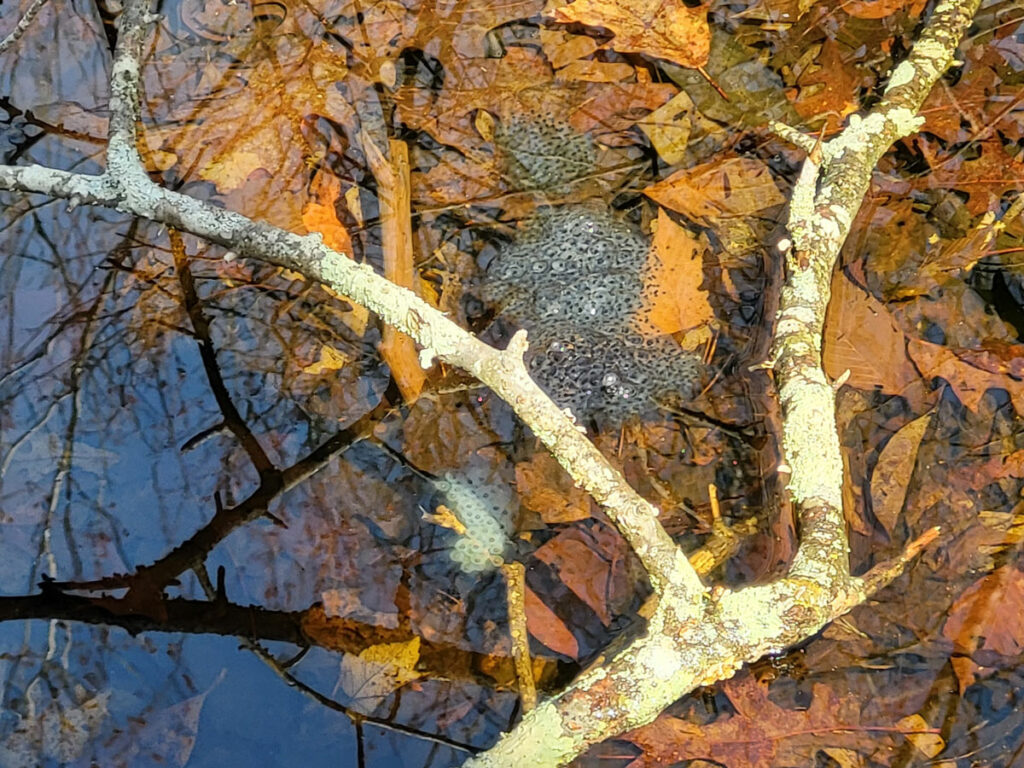Sounds of spring peepers and wood frogs suddenly arrive in the woods after the first warm rainy night in March. The small wood frogs and larger spotted salamanders migrate from upland habitats under rotted logs and leaf litter to breed in temporarily filled vernal pools. They lay their egg masses in the deepest part of a vernal pool, attached to sticks and branches. Their calls can lead you to the pools.
A vernal pool is created by rainfall and groundwater accumulation in a depression on the forest floor and identifiable by the presence of certain obligate species including wood frogs, spotted salamanders, fairy shrimp, marbled salamanders, and Jefferson salamanders (not local). There are no predatory fish. Tiny fairy shrimp can survive only in vernal pools. Juvenile marbled salamanders, having hatched in the Fall, are found in the muddy bottom. A buffer of at least 750 feet or more of undisturbed woodland surrounding a vernal pool is recommended for protection. Greater distances are recommended for avoiding isolation, inbreeding and repopulation of failed or new pools. Wood frogs will travel as far as half a mile from a vernal pool.

A Tier One vernal pool is defined as having a count of 25 or more amphibian egg masses. The eggs are laid in a flat cluster and fill upon contact with water. A tiny larvae can usually be seen in each egg. Green algae will eventually cover the eggs and supply food for the emerging larvae.
Wood frogs are identifiable by a sound like a flock of quacking ducks in the woods. They will draw you in but will go silent when aware of your presence. Tiny spring peeper frogs herald spring simultaneously with their high-pitched, loud calls. Be sure to get outdoors to enjoy the sounds of Spring!

